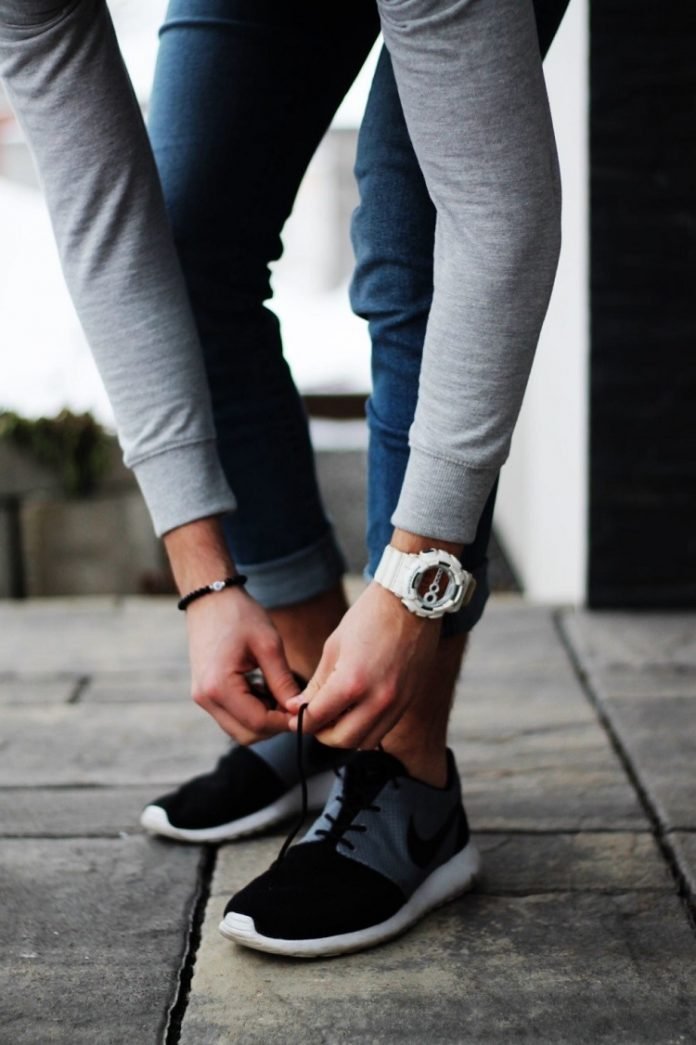Last Updated on November 23, 2022 by
Walking is one of the most popular forms of exercise worldwide because it doesn’t need any special equipment. Despite its simplicity, walking provides numerous benefits and can help you lose weight, prevent heart disease and diabetes, reduce stress, and help you sleep.
But like any form of exercise, you can injure yourself while walking. One mistake many walkers make that causes injuries is wearing the wrong walking shoes. Ill-fitting shoes can cause blisters, shin pain, foot pain, and more.
How do you know which walking shoes to wear? Read on to learn how to choose the best walking shoes for you.
Table of Contents
Walking Shoe Types
Walking shoes come in many different forms and designs. It’s essential to know the different types and their uses so you can choose a walking shoe type that fits your needs.
Running Shoes
Running shoes are for more intensive aerobic activities than walking. They are intended for use on pavement and often have cushions and support to absorb the shock of running.
Although they have more cushion, running shoes are lightweight and flexible to move with your foot and make running easier. These features also make them excellent to walk in. So, if you intend to run and walk, a running shoe can meet your needs for both activities.
Walking shoes
Unlike running shoes, walking shoes are specifically for walking and often have more support in the heel since when we walk, our heel hits the ground first. Walking shoes can be designed for comfort, racewalking, motion control, or stability. As a result, they will have different features, cushions, and weights to help protect your feet when walking in different conditions.
If you are on your feet walking at work all day, you may want comfortable walking shoes with a lot of cushion to prevent pain. Racewalking shoes are designed for specific motion, so they are more flexible and lightweight but don’t have as much cushion and support.
Motion support and stability walking shoes are made for those that overpronate. These shoes are more inflexible and have more heel support. They help correct a walker’s stride to prevent injuries to the feet and ankles.
Hiking Shoes
If you are going hiking on rugged terrain, you may want to wear hiking boots. Hiking boots provide more stability and protection and help prevent slipping. But, these shoes are heavier than walking shoes to provide extra protection.
What to Look for in Walking Shoes
The best footwear for taking a walk will be comfortable, lightweight, flexible, and provide the right amount of support. Once you know how you will use it and the features you need, you also need to find one with the right fit.
You’ll want to know the shape of your feet to ensure a good fit. You don’t want a walking shoe that is too wide or narrow as it can lead to injuries. Also, know what type of arch your foot has so you can choose a shoe that matches it.
Over time, waking will wear down the cushioning and support of your shoes that you may not be able to see. As a result, you could injure yourself if your walking shoes aren’t durable and long-lasting. Shoes like Hoka Walking Shoes are designed to last a long time, providing the protection necessary for your feet.
Choose the Best Walking Shoes for You
Not all walking shoes will be appropriate for you. When choosing the best walking shoes, you’ll want shoes with features that fit your feet and the terrain where you will be walking. Proper design, flexibility, and cushion are essential to protect your feet while walking.
Do you want more information to help you stay fit? Check out the health section of our website for more health tips and guides.






















